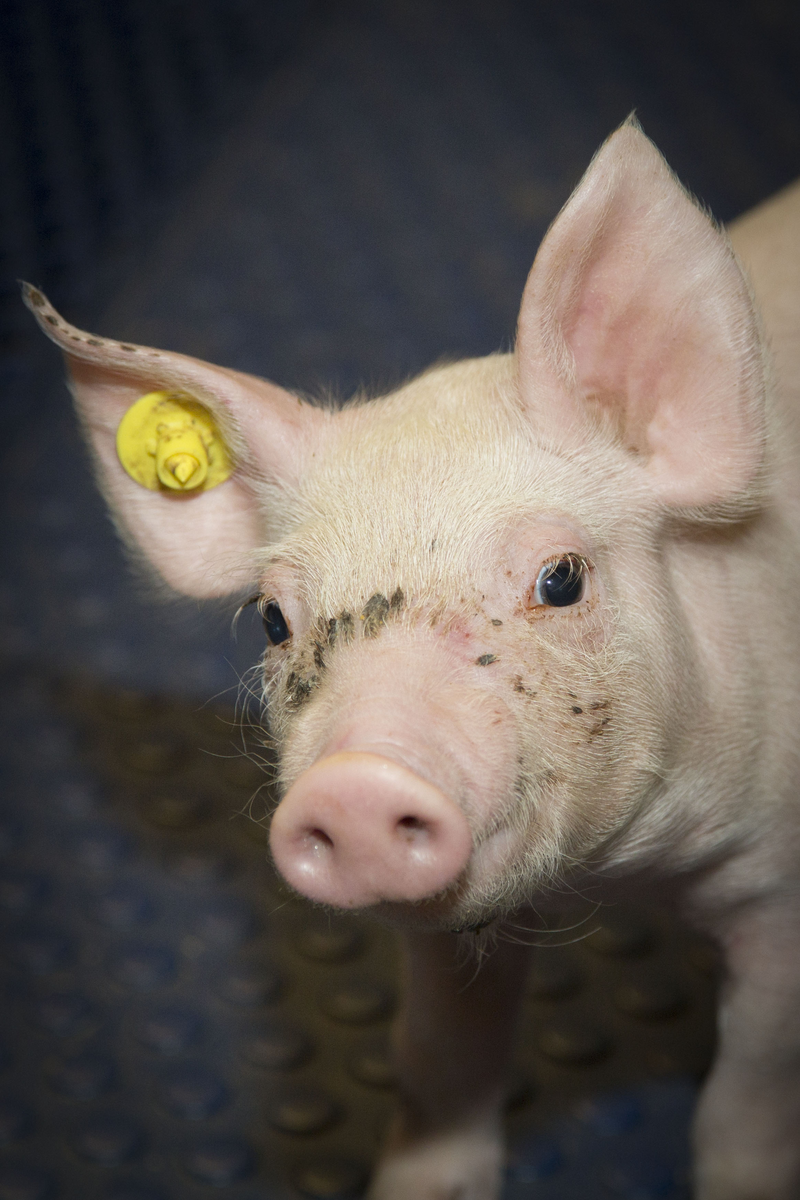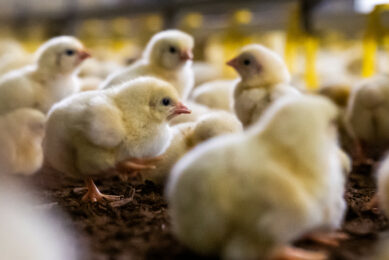Gut health – the key to good performance

Perhaps as a farmer or feed compounder you believe that you know exactly what constitutes ‘gut health’. Yet defining gut health isn’t easy.
A healthy gut must be healthy physically, chemically and immunologically. It must play host to a bacterial population that also has a favorable impact on all those parameters. And all of these factors interrelate. Diet, disease and environmental management are just a few of the factors which can disrupt the balance of these contributory components and affect gut health. Even a subtle compromise in gut health can have severe consequences for the disease status, welfare and production performance of the animal.1
Why does it matter?
A key objective for any producer is to achieve maximum production from their stock for minimum cost. Nutrition is often the major component of total costs in many production systems, so getting the most from it is critical.1 Without good gut health, this is not possible, resulting in reduced feed conversion ratio (FCR) and growth rates. Food production is becoming more competitive. The cost of animal feeds and drive to reduce antibiotic usage has increased. This means maximizing FCR has become even more important.
Animals with poor gut health are also more susceptible to disease – a huge consideration for producers worried about reducing costs and maximizing production. For example, poultry with poor intestinal health are more likely to be affected by coccidiosis – one of the most costly diseases to the poultry industry.1 Producers that want to maintain a competitive edge can’t afford to ignore intestinal health.
Digestion and protection
As well as digestion of food and absorption of essential nutrients, the gastrointestinal tract has a number of other vital functions. The inner lining of the gut consists of a one-cell-thick layer called the epithelium, made up predominantly of intestinal epithelial cells (IECs). This mucosal layer provides the first line of defence against harmful agents, which is crucial, as the gut is constantly exposed to a number of potential hazards. In fact, the gut mucosa is the largest exposed surface area in the body of most animals.2 This means that there’s huge potential for breaching its barriers and explains why defence is so important. It provides protection through various physiological means, as well as by stimulating an immune response.
The structure of the mucosa is the first physical factor which contributes to the gut’s protective properties. The IECs are closely connected, joined by ‘tight junctions’ which create a seal against the contents of the gut. This way the mucosa can act as a selective barrier, enabling beneficial nutrients to be absorbed through the cells, while keeping harmful substances out. Production of a mucus lining as well as other protective substances such as glycoproteins helps to shield the cells of the mucosa and can trap harmful organisms. The IECs are continually and rapidly regenerated, which also helps to keep the gut lining healthy.
To maximize the absorption of nutrients from food, the mucosa has to have a large surface area. This is achieved through the lining of the IECs being arranged into folds of finger-like projections called villi. Damage to or alterations in this structure can lead to a decrease in the area of the gut available to absorb nutrients. Factors such as diet and disease play an important role in the development and maintenance of villi structure.3
Immunity
In addition to the physiological protection properties of the gut, the IECs are able to detect and react to harmful microorganisms. The gut is actually the largest immune organ in the body and can mount an appropriate immune response very quickly.2 This early response is known as ‘innate’ immunity. When the IECs come into contact with a harmful substance, they initiate the production of molecules and chemicals. Some of these have anti-microbial properties and target the invader directly. Other chemicals recruit more immune cells for an even stronger, prolonged response. This is termed ‘adaptive’ immunity as the response is modified depending on the specific threat.
Microbes and the gut
Another key factor at play in the preservation of gut health is its natural microbial flora composition. This includes bacteria, fungi, and protozoa although bacteria predominate.4 The development of this community usually begins at birth and is influenced by bacteria picked up from the environment, the feed and farm personnel. There are billions of microbes present in the gut, the majority of which are non-harmful. In fact, presence of beneficial ‘commensal’ bacteria is essential for maintaining good gut function. The interactions of the gut’s microbial flora are extremely complex and ways in which it is thought to contribute to gut health are numerous. These include synthesis of vitamins, improvement of food absorption and inhibition of detrimental pathogenic bacteria. There are also positive effects on gut motility.
One mechanism by which beneficial bacteria provide protection against pathogenic organisms is competition for colonization sites and key nutrients.2 Beneficial microbes also have a role in stimulating the immune system and maintaining the health of the IECs, which contributes to the animal’s defence system. They play a key role in signalling for healthy gut development, having an impact on factors such as villi length and structure. All of these mechanisms are not mutually exclusive and are likely to occur in combination to help maintain a healthy gut. 5
The diets of many production animals contain non-digestible portions, often of fibrous origin. It is the beneficial microbes which are able to break down this non-digestible fibre, making the energy available to the host. Product of this process are short chain fatty acids (SCFAs) which can be used for energy by the gut and other organs in the body.6 Without this microbial metabolism, the potential of certain types of dietary components would remain unused.
Intestinal influencers
There are a number of factors which affect the integrity and function of the intestinal mucosal barrier and the microbial composition in the gut. Diet plays a large role, with certain nutritional components favouring the production of particular bacterial populations. The physical texture and quality of the feed will also have an impact. The overall health of the animal as well as environmental exposure to certain pathogens can cause a shift in the bacterial population.
The use of antibiotics can also upset the balance of bacterial populations in the gut. This is why it is preferable to target specific bacteria using ‘narrow’ rather than ‘broad’ spectrum antibiotics when such treatment is necessary. As immune defense is so important in maintaining gut health, stressful periods, or other factors which cause immunosuppression, will place animals at higher risk of intestinal compromise.
Consequences at farm level
So, it’s clear that poor gut health can arise due a series of interacting factors but what does this mean in practical terms? If the gut’s structure, microbiota or immune function does not fully develop or is compromised, productivity will be negatively affected. Microbiota composition plays an important role in effective food digestion and absorption, so perhaps it’s not surprising that there’s a correlation between microbiota composition and FCR.7,8 A poor or inappropriate immune response can also have a negative impact on FCR as a result of diverting energy and nutrients away from production.7
This means that focusing on maintaining a healthy microbial balance and intestinal immune system will have direct benefits for productivity and profits. Gut structure and morphology also has an impact – the greater surface area available to absorb nutrients, the more potential there is for improved growth. Another important consequence of poor intestinal integrity is an increased susceptibility to diseases, such as coccidiosis.
Improving intestinal health
Diet, environmental management, animal husbandry and biosecurity are all important in regulating gut health. Manipulation of nutrition and supplementation in particular can have profound effects in optimizing gut health. The opportunities presented by SCFAs in this regard are becoming more widely recognised, having an effect on a number of the vital structural and functional aspects of gut health. Of the SCFAs, butyrate is of primary importance when it comes to gut health with tributyrins being one of the most effective forms of this product available. Supplementation with butyrate across a variety of species including poultry, pigs and ruminants, has been shown to have many functions over and above providing an additional source of energy.9 Butyrate has been shown to improve nutrient digestibility, increase mineral absorption, optimize the profile of intestinal microbiota, down regulate bacterial virulence and support tissue development and repair.9,10 Beneficial effects on the integrity of the epithelial cells and the gut’s defence systems have also been demonstrated. SCFAs like butyrate can increase mucosal surface area and create a larger absorptive capacity. It’s likely that all of these factors combine to result in improvements in feed conversion rates and weight gain which are seen with butyrate supplementation.9, 10
Gut health – the key ingredient
Good gut health is vital for getting the best growth and FCR out of any food-producing animal. The gut is a highly complex organ and maintaining its health involves optimizing many aspects of management, with a focus on diet as a key influencer of gut structure and function. As food-producing industries face increasing challenges, tools that exert positive effects on gut health are becoming even more important for producers looking to achieve a competitive advantage.
References are available on request.











